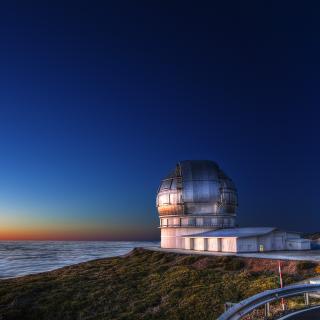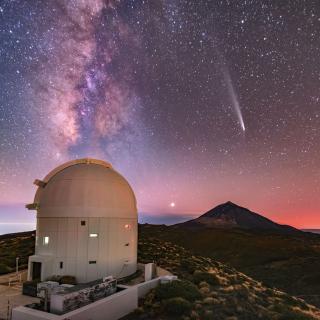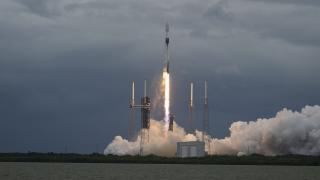The LIRIS spectrograph (Long-Slit Intermediate Resolution Infrared Spectrograph), an instrument built at the Instituto de Astrofísica de Canarias (IAC) and installed at the “William Herschel” Telescope” (WHT), of the Roque de los Muchachos Observatory (Garafía, La Palma), has obtained an image (see link in this press release) of the impetuous birth of a recently discovered star in the constellation of Orion.
This image was obtained during the second series of tests carried out with LIRS during the past few weeks. The size of the field is approximately 4 minutes of arc, sideways. The observed object was discovered coincidentally by amateur astronomer Jay McNeil last January. The McNeil nebula is located just above the three stars forming Orion’s Belt in a star-forming region at a distance of about 1,500 light years.
In this image we can see a phenomenon that is extremely rare to observe. It is one of the violent episodes that take place during the slow birth of a star. The “star nurseries” are huge clouds of gas and dust, recognizable as very dark areas in the sky. During this process a disk of gas and dust is formed, surrounding the star, and slowly falling over its surface, helping it to grow.
In February 2003, a multidisciplinary team, formed by researchers and engineers at the IAC was able to successfully test the LIRIS spectrograph, once it was installed at the WHT, of the Isaac Newton Telescope Group (ING). LIRIS is an instrument that allows for the obtaining of infrared images and spectra of more than one object at a time. Specifically, you can observe up to 20 sources of the same field at a time. There are other similar instruments, but LIRIS is the only one with these characteristics in the Northern Hemisphere. UIT this instrument, the IAC has proven its capacity to develop competitive astronomical instruments. When the testing period ends, in August this year, LIRIS will be one of the common use instruments of the WHT.


